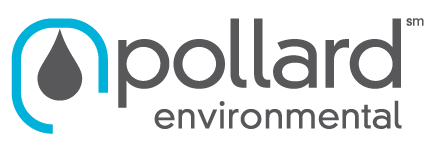How We Can Help:
For more than a quarter century, Pollard Environmental has been providing professional services associated with residential and farm petroleum storage tanks. Our services include compliance (leakage) inspections, all necessary reporting requirements, Building/Fire Code compliance, and environmental corrective action (assessments and cleanups) when necessary. We also handle the VPSTF financial assistance, where applicable, including all necessary paperwork and submittals.
Concerns Regarding Petroleum Storage Tanks:
When buying, selling, leasing, or otherwise legally responsible for real estate, the presence of a petroleum storage tank or tanks on the property may well affect your plans for its use and enjoyment. Possible soil and/or groundwater contamination and its effect on human health and the environment, as well as resulting responsibility for corrective action, are significant concerns.
Aboveground storage tanks (ASTs) are easy to inspect and usually leakage is visible. Underground storage tanks (USTs), however, often present challenges. Sometimes a distinct petroleum odor, excess water in a tank, or unusual fuel consumption (if currently in use), will signal leakage. The best way to determine if a UST is leaking is the use of borings below the depth of the tank and recovery of soil for testing. The importance of having professionals perform such inspections cannot be overemphasized.
Likelihood of Leakages from USTs:
Pollard Environmental has inspected over 6,000 USTs (both in-use and out-of-use), and over 70% were found to be leaking. The vast majority of these inspections have been pursuant to real estate transactions. We believe this percentage is representative of residential and farm USTs in Virginia installed prior to 1975 (i.e., USTs approaching 50 years of age).
Tank Inspections / Regulatory Requirements:
A tank inspection is normally the first step in evaluating and addressing a petroleum storage tank. Aboveground storage tanks (ASTs) are easy to inspect and leakage is usually visible. Underground Storage Tank (UST) inspections, however, are more challenging, and the importance of having a professional perform such inspections cannot be overemphasized. A UST inspection normally determines the location, size, orientation, contents, and status of the tank with regard to leakage. Leakage is evaluated via borings below the depth of the tank with recovery of soil for testing.
Reporting Requirements/Corrective Action:
State Water Control Law (SWCL) requires the reporting of petroleum releases to the Virginia Department of Environmental Quality. Which in turn determines the corrective action, if any, required to remedy the problem. The first priority is to stop the leakage by removing the remaining petroleum from the tank. In some instances, natural processes may satisfactorily remediate the contamination over time. More serious leaks posing risks to groundwater, water wells, basements, surface water, and/or other receptors often require more aggressive action such as excavation and proper treatment/disposal of contaminated soils.
Responsibility for Corrective Action:
The party owning the real estate when a petroleum release is reported to the VDEQ will generally be responsible for corrective action, if any, as required by VDEQ. If it is determined that a previous owner or person responsible for the property knew or should have known about leakage and failed to report it, that person/entity may be liable for clean-up and/or fines pursuant to SWCL.
Closure:
Once a petroleum release has been addressed to the satisfaction of the VDEQ, they will issue the Responsible Party(RP) a closure letter.
Virginia Petroleum Storage Tank Fund:
In the event of a petroleum release from a UST or AST, the Virginia Petroleum Storage Tank Fund (VPSTF) normally provides reimbursement for costs for required environmental corrective action once a deductible (“financial responsibility”) is met. For releases from residential and farm tanks, the deductible is $500. The VPSTF assistance is available for VDEQ-required corrective action only, and it does not cover Building/Fire Code compliance costs exclusive of VDEQ requirements. VPSTF assistance requires pre-approval of activities and accurate claim submittal, so it is important to have an experienced consultant, such as Pollard, handle this process.
Building/Fire Code Requirements:
In addition to SWCL, both the Uniform Statewide Building Code (USBC) and the Statewide Fire Prevention Code (SFPC) require that abandoned or leaking USTs be emptied of any remaining fuel and either removed from the ground (with proper backfilling) or filled with an approved inert solid such as a cement slurry (flowable fill) or an approved foam. Enforcement of the Codes is the responsibility of local building or fire officials, and specifics may vary among the localities. There is no financial assistance (VPSTF or other) for Building/Fire Code compliance.
FAQs:
What is the fee?
Standard fee for a residential underground storage tank (550-gallons or less) ranges from $350 – $550.
What is the turn-around time?
Standard turn-around time is 10 business days; the process can be expedited to 6 to 7 business days for an additional $150.
What kind of report do I get?
Our inspection report discusses our findings and how they relate to the applicable regulations. We also normally provide an estimated “cost to cure”, if applicable.
What do I pay?
We will issue an invoice to our client at the time of the inspection order, and payment is due before our report can be issued.
